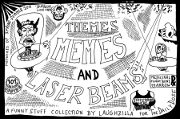How ‘gravitational waves’ will change astronomy as we know it

Supermassive objects such as black holes and neutron stars warp spacetime around them, and interactions between these bodies can result in the formation of gravitational waves, similar to ripples in a pond. However, these waves, postulated more than 100 years ago, cannot be seen directly like light or radio waves. Now, a new study by the North American Nanohertz Observatory for Gravitational Waves (NANOGrav) Physics Frontiers Center (PFC) has detected a low-frequency signal that might be gravitational waves. “We can’t yet say with confidence that what we’re seeing is gravitational waves, but if it is, the “signal” makes a lot of…
This story continues at The Next Web




Discussion ¬